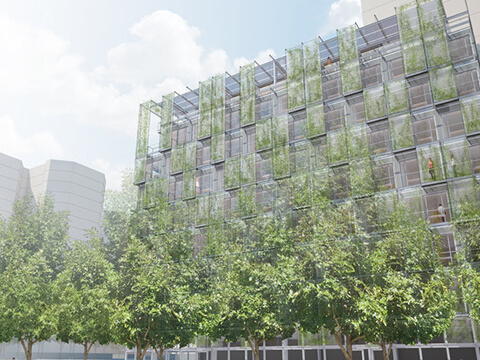 Up until just last year, big box gyms and large warehouse-type exercise facilities were the favored tenants at many retail centers. They were aggressively snapping up infill spaces and becoming the favored tenants of retail real estate owners. After the COVID-19 pandemic these gyms are looking like they may never return.
Up until just last year, big box gyms and large warehouse-type exercise facilities were the favored tenants at many retail centers. They were aggressively snapping up infill spaces and becoming the favored tenants of retail real estate owners. After the COVID-19 pandemic these gyms are looking like they may never return.
During regular economic times, exercise is a big industry. With over 71 million consumers in the US, spending $32 billion in 2018, health club use hit an all-time high last year. The number of gyms and other workout centers rose 24% since 2010 to 111,000 and was forecasted to reach 121,000 locations by 2024.
Large gyms like VASA with 45 locations, each averaging 50,000 square feet, charging only $10 per month for a membership aren’t going to be able to cover their overhead costs after being shut down for several months. In fact, most big box gyms still haven’t been able to open and don’t have solid guidance as to when they are able to operate again. When gyms do open up again, they won’t be able to accommodate all of their members due to strict, regulated protocols. Deploying shields and disposable coverings will help, but will also increase the overhead costs. The requirements of social distancing, not touching equipment and face masks is simply too large of an obstacle for big box fitness centers to overcome. These required processes will force gyms to minimize equipment use which negates the purpose of joining a gym. Lower demand, higher costs and overhead will result in many of the big box gyms to look hard at their business model.
The era of the big box fitness centers is over. During the pandemic lockdown, many people discovered the joys of working out at home through virtual classes, at home gyms and running or biking locally. The focus for exercise businesses going forward will be on fitness studios, boutiques and individual training. Fitness businesses will also need to provide more at home products, retail sales and online courses to remain competitive.
One possible way for large gyms to continue to operate is through open air concepts such circuit courses and outdoor gyms. Volleyball courts, exercise classes outdoors and running tracks will become more prevalent. CrossFit gyms have incorporated some of these concepts, but exercise businesses will need to fully include them or be forced to close. Muscle Beach in Venica, California and Rio Academia in Rio de Janerio in Brazil are excellent examples of outdoor gyms that are very popular. In addition to outdoor rooms and free weights, these places also offer classes such as Tai Chi, Fit Dance, martial arts, and yoga.
The fitness industry was already oversaturated before the COVID-19 crisis and was due for a bit of a pullback. The middle-tier fitness centers were ripe for consolidation. Since exercise is a discretionary spending item, many people will cut back their fitness expenses.
What does this mean for real estate investors? Commercial retail investors should be aware of the coming demise of the big box exercise facilities and plan ahead. When evaluating new tenants, consider smaller, more boutique businesses that provide a mix of classes, memberships, retail and other items to help diversify their revenue stream. Developers who are truly innovative can designate an open area near their development for a prospective fitness company to build an outdoor gym. One research study stated that the average American gained 5 pounds during the pandemic lockdown, so hopefully they are eager to get back to the gym to work those extra pounds off.






